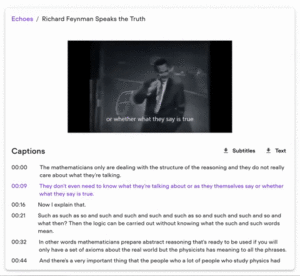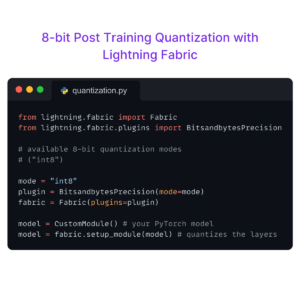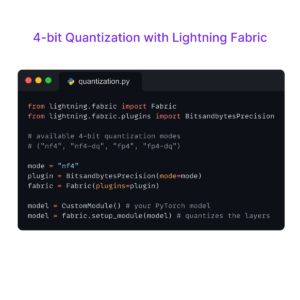Researchers in France have identified the four sub-phenotypes of long COVID while researchers in the US just released the largest federated ML effort to date. Lightning introduced an open-source transcription powered by OpenAI’s Whisper and Sebastian Raschka’s new deep learning course is getting the attention of the research world. Let’s dive in!
Featured Story:
Sebastian Rashka has launched a free university-quality deep learning course!
The first 2 units have dropped with more to come over the next few months. Each unit provides concise and practical lessons to cover all the fundamentals of deep learning along with quizzes, code examples, downloadable content, and other learning resources to everyone for free.
Research Highlights:
🏈 The NFL announced the NFL Contact Detection Challenge, a new innovation competition aimed at predicting player injuries using machine learning and computer vision. The challenge, held in collaboration with AWS, invites experts to create new methods for measuring and analyzing the timing, duration, and frequency of player contact during NFL games using artificial intelligence and related disciplines. Collecting this data will help the NFL quantify when contact occurs on the field, allowing the league to better predict – and ultimately prevent – player injuries.
🦠 Researchers recently identified different sub-phenotypes of PASC [post-acute sequelae of coronavirus disease 2019 (COVID-19)] based on illnesses diagnosed within 1 to 3 months of an acute infection by severe acute respiratory syndrome coronavirus 2 in a study published in Nature Medicine (SARS-CoV-2). The study’s findings highlighted four machine-learned PASC sub-phenotypes that are driven by repeatable data. The results might help health authorities manage PASCs better.
🧠 The largest federated machine learning (FL) effort to date was led by researchers at Penn Medicine and Intel Corporation. They collected data from 6,314 glioblastoma (GBM) patients’ brain scans at 71 locations across the world in order to develop a model that can improve boundary identification and prediction in three tumor sub-compartments without jeopardizing patient privacy.
ML Engineering Highlights
🎤 Apple Music is about to become a fully capable karaoke machine. Subscribers will soon be able to tap the microphone icon to bring up a slider and reduce the vocals of a track so they can sing along to their favorite songs. Apple Music Sing will be leveraging a sing an on-device machine learning algorithm, as well as the tech behind the noise-cancellation used for FaceTime to bring this feature to life.
🎨 Canva’s enterprise release of Canva Docs, part of its Visual Worksuite released this September, is heavily incorporating generative AI. Canva Docs includes the company’s recently released text-to-image beta, which is based on Stable Diffusion, as well as the recently announced Magic Write, an AI-powered copywriting assistant based on OpenAI’s GPT-3. Canva’s CPO announced that even more generative AI capabilities are coming in March.
Lightning AI Highlights
👂 Introducing Echo, a Lightning App that uses near-human speech recognition to transcribe video and audio files – powered by Lightning and OpenAI’s Whisper. You too can deploy OpenAI’s Whisper as a cloud product- learn how!
☁️ This week, we launched cloud machine logs for your distributed machines. Debugging on the cloud is now readable, real-time, and all in one place. You can debug with consolidated logs or dive into a single component. Visit Lightning to get started for free!
Community Highlights
🧰 GeoSeg is an open-source semantic segmentation toolbox based on PyTorch, lightning and timm. It focuses on developing advanced Vision Transformers for remote sensing image segmentation. Kudos to Libo Wang!
🔨 3D-ML is a versatile framework for 3D machine learning built on Lightning and Hydra. The library provides experiment configuration control, consistent data augmentation and preprocessing stops, reference implementations and much more. Shoutout to Leo Stanislas!
🎨 Naifu Diffusion is a project for finetuning Stable Diffusion on images and captions. Currently implemented features include aspect ratio bucket and custom batching, hidden states of CLiP’s penultimate layer, and extending the Stable Diffusion token limit by 3x. Check out more of this user’s work here!
Don’t Miss the Submission Deadline
- IJCAI 2023: the 32nd International Joint Conference on Artificial Intelligence. Aug 19-25th 2023. (Cape Town, South Africa) Abstract due: January 11, 2023. Full paper submission deadline: January 18, 2023
- ACL 2023: The 61st Annual Meeting of the Association for Computational Linguistics. July 9-14 2023 (Toronto, Canada). Full paper submission deadline: January 20, 2023
- ICML 2023: Fortieth International Conference on Machine Learning. Jul 23-29 (Honolulu, Hawaii). Full paper submission deadline: January 26, 2023 08:00 PM UTC
- IROS 2023 :International Conference on Intelligent Robots and Systems. Oct 1 – 5, 2023 (Detroit, Michigan). Full paper submission deadline: March 1, 2023
- ICCV 2023: International Conference on Computer Vision. Oct 2 – 6, 2023. (Paris, France). 1. Full paper submission deadline: March 8, 2023 23:59 GMT



